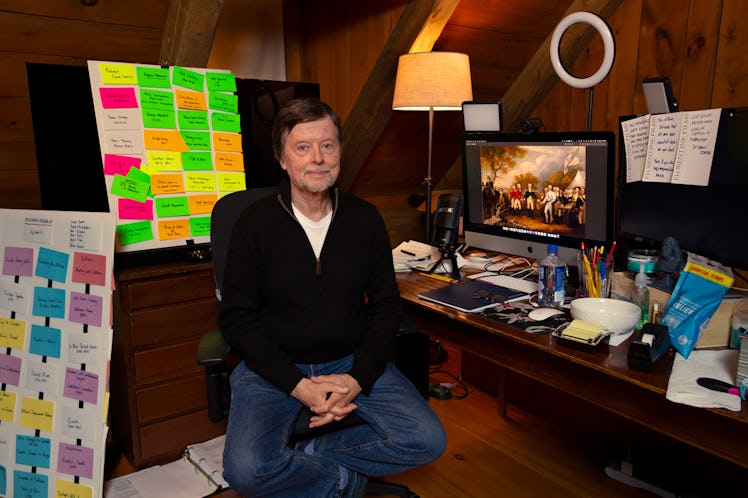Ken Burns on Why The American Revolution Is His Most Important Documentary Yet

Your upcoming six-part documentary, The American Revolution, codirected with Sarah Botstein and David Schmidt, tells the story of our country’s turbulent path to independence. It’s the latest chapter in your ongoing American chronicle, ranging from Jazz and Baseball to The Civil War and The Dust Bowl. What led you to the American Revolution right now?
I started when Barack Obama had 13 months left in his presidency. I won’t work on anything more important than this origin story. It’s so central, and it resonates today. It gives you the idea that human nature never changes, and whether it’s greedy or generous, virtuous or venal, it will superimpose its will upon events. You can see yourself in the past in interesting ways, and I’m hoping that Americans can reacquire a complicated past, not a simple, jingoistic, good guys/bad guys past.
What new arguments is The American Revolution making about the country’s origins?
I don’t think there’s an argument being made. We are storytellers. Storytellers are going to avoid the fashions of historiography or particular points of view and, instead, gather scholars who have a diverse perspective that can help you understand a Native American dimension or a Caribbean economic viewpoint—understand battles, what’s happening with women, the role of slavery. There is a certain bankruptcy to the old top-down version of our past, but there’s also an unforgivingness to throwing out all the boldface names [of history], so we’ve never accepted that. Instead, we tell a good story.
Your movies come alive with a wealth of documents, going back to your first film, Brooklyn Bridge [1981], about the construction of that historic New York landmark.
[For Brooklyn Bridge,] there were no living witnesses except a 104-year-old Black man named Henry Jones, who was a little kid delivering salted water with a bit of lemon to the workers on the bridge. Only 0.01 percent of the population had their portrait painted, but that doesn’t mean the others didn’t exist or weren’t central to the American project. They exist in gravestones, enlistment records, letters, memoirs, in the places where they gave up their bodies, their lives. This isn’t just George Washington—it’s also Betsy Ambler from Yorktown, Virginia, who’s 10 when the war begins and is suddenly a refugee.
The American Revolution has star-studded voiceovers, from Kenneth Branagh and Morgan Freeman to Meryl Streep and Tom Hanks. How do you like directing actors?
Meryl Streep is wonderful and has worked with us for 15 years, Tom Hanks for 20 years. He’s a minister after the Battle of Bunker Hill. Josh Brolin has the impossible job of being George Washington. I said, “I need you to be compelling but unknowable, opaque but filled with meaning, and having emotions just leaking out the sides.” And he did it!
Your famous technique is to move the camera over still photos and other materials. How do you find the right rhythms?
It’s all music—my brother, Ric, said that all art forms, when they die and go to heaven, want to be music. By the last month of editing, it’s mostly me telling the editors on a particular shot, “Open up two frames”—that’s a 12th of a second. It’s like changing something from a quarter to an eighth note. It makes a big difference.
Did you grow up in a family that loved American history?
My father was an anthropologist, but everybody else—my mother, my grandfather, my grandmother, and my uncles—was involved in science, biology, and things like that. But as a kid, I was always interested in American history, and I loved maps. The moment I decided to do The American Revolution was interesting. I was looking at a map of American and North Vietnamese positions while making The Vietnam War, and I said, “This is the British moving west in Long Island toward Brooklyn Heights. We can do the Revolution!”
You are in New Hampshire, where you’ve lived and worked for many years.
Yes, 46 years this week. I came here in a green Chevy van in 1979 with the woman who would become my wife and the mother of my first two children. It’s given me the ability to live for nothing. I have lived in the same bedroom for 46 years. And I’m looking out at the first rain we’ve had in ages. One of the big stars of The American Revolution is the beauty of the United States, and I shot a handful of shots with my iPhone on my morning walk. I couldn’t imagine not having the buffer of nature, both geographically and spiritually.